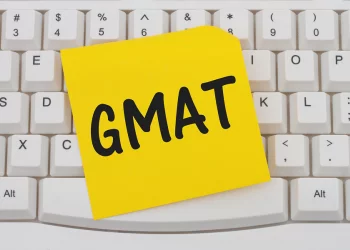
Admittedly, there are easier tasks out there than deciphering GMAT scores. The Verbal section is scored on a scale of 0 to 51. The Quantitative section is scored on a scale of 0 to 60. Then there’s the Integrated Reasoning score, which uses a scale of 1 to 8. To add to the confusion, the Analytical Writing section is scored on a scale of 0 to 6. There is also the total score, which ranges from 200 to 800. And then, to cap it off, there is the GMAT percentile ranking.
The percentile ranking of one’s score is far more revealing to MBA and Master’s admissions officers (and applicants, for that matter) than a simple GMAT score. Simply put, it indicates how your scores compare with those of other test takers.
How does it work?
For each of your GMAT scaled scores you will also receive a corresponding percentile rank –from 0% to 99%. Let’s say you have a ranking of 75%. This means that 25% of test takers performed as well as or better than you. It also means that you outperformed 75% of test takers.
The higher the percentile of your score, the better. Reaching the 99th percentile means that only 1% of students achieved a better score than you, and the 100th percentile puts you at the very top GMAT-wise. In contrast, a score below the 50th percentile means that your score is not competitive and you most probably need to sit the exam once more. It should be noted that two-thirds of test takers score between 400 and 600, i.e. between the 10th and 56th percentile.
Over time, although your score stays the same, your percentile ranking may change because of GMAC’s policy of recalculating the ranking every year using exam data from the previous three years. The rank, therefore, shows you and the admissions committees how you performed in comparison to all GMAT test takers during the most recent three-year period.
Below you can see the ranks adjusted to account for the latest performance trends. The table represents a sample of nearly 600,000 students who took the GMAT between 2014 and 2017.
| Score | Percentile ranking |
| 800 | 99% |
| 750 | 98% |
| 700 | 88% |
| 650 | 73% |
| 600 | 56% |
| 550 | 39% |
| 500 | 27% |
| 450 | 17% |
| 400 | 10% |
| 350 | 6% |
| 300 | 3% |
| 250 | 2% |
| 200 | 0% |
You can see the full table at here.
How do applicants and B-schools use the percentile ranking?
Percentile ranks are designed to help both test takers and schools evaluate one GMAT performance relative to that of other test takers. Schools decide individually whether to compare your scores with all GMAT test takers or only with those of other applicants to that school. Candidates use the rank as a yardstick to evaluate their chances of gaining admission to a particular program. Schools usually provide average GMAT scores for their incoming classes, which gives aspirants a fair idea of how high they need to aim in order to earn a place there.
Let’s say an MBA applicant wants to gain admission to the MBA program of Stanford Graduate School of Business (US) – one of the most prestigious and competitive business programs at the moment. The average GMAT score for its latest incoming class is 740 – a score that corresponds to the 97th percentile. In other words, if the applicant wants to be successful in their Stanford MBA application, their score should generally be better than 97% of all GMAT test takers over the past three years. The example is a little extreme – indeed, Stanford’s MBA class is distinguished company to be in. There are other very good schools, however, where the average GMAT score is lower.
Check out: Crack the GMAT – How to Score Your Best
What is a good percentile rank?
The question of what constitutes a good percentile rank is the same as the question of what constitutes a good GMAT score. And the answer to both is that it depends on your goals. For instance, if you aim to get admitted to the MBA program of INSEAD (France), you need to score somewhere around 709, which corresponds to the 90th percentile. If you target the MBA program of IESE Business School (Spain), your score should be around 690, or on the 85th percentile.
An important caveat: although the GMAT is a key indicator of class performance, it is only one of the elements considered in the application process. A top GMAT score alone does not guarantee you admission.
Check out: How a 600 GMAT Score Could Get You in to Harvard
Cut-throat competition pushes scores higher
About 18 years ago, the average score for MBA programs ranked in The Economist's top 10 was 688. In 2014, it has climbed to 722. These figures may lead you to presume that applicants have become more intelligent or that the GMAT is now easier than before. In reality, it is more likely that competition has intensified. The bar is being raised higher and higher, and the only way to clear it is to prepare better than your competitors. So roll up your sleeves and get down to work.


Comments